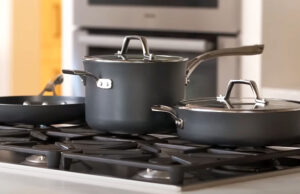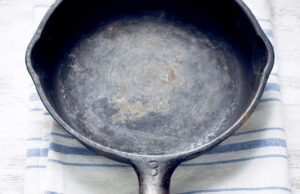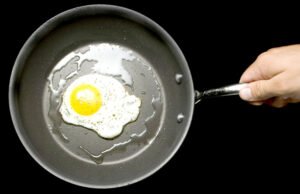As an Amazon Associate, I earn from qualifying purchases at no extra cost to you.
Bosch Dishwasher Salt Light Stays On: Expert Advice
Salt light stuck on? It is annoying, right? You load dirty dishes, press start, and boom—the tiny red salt light just stares at you. Feels unfair when you already added salt, doesn’t it? Many people get worried and think something is broken. But most of the time, it is simple. In this article, we will talk about why that light stays on and how you can fix it without stress.
Understanding Why the Salt Light Stays On
The salt light in a Bosch dishwasher is a small but important signal. It tells you when the salt level is low. The salt itself is not for taste. It is for softening hard water, which keeps your dishes clean and prevents white spots. When the light stays on, it means the system thinks the salt is missing. But sometimes it is wrong.
Many times, people add the salt but forget to run a cycle. The sensor may need water movement to detect the salt. If the light does not go off right away, do not panic. The dishwasher needs some time to read the change. So, the problem may be small, even if the light annoys you.
Another reason could be that the salt reservoir is not filled correctly. If the cap is loose or salt is spilled inside, the sensor can get confused. This is common when someone pours salt too quickly. The granules may not settle well. Checking the cap and cleaning the area often helps.
Hard water is also part of this story. If the water softener settings are not correct, the dishwasher may signal empty even with enough salt. Every home has different water hardness, and Bosch dishwashers need the right setting. Adjusting this can often fix the false light problem.
- The light shows low salt but may be wrong.
- Always check the salt reservoir and cap.
- A cycle may be needed for the sensor to reset.
- Water hardness settings play a big role.
Checking the Salt Reservoir Correctly
When the light stays on, the first thing is to look at the salt reservoir. It sits at the bottom of your dishwasher, near the filter. Open the cap carefully. Inside, you may find water mixed with some salt, which is normal. That is how the softening process works. But what matters most is filling it correctly.
Use only dishwasher salt, not table salt. Many people make the mistake of using the wrong type. Table salt has additives that can damage the softener and sensor. Dishwasher salt is pure and comes in larger grains, which dissolve slowly and work properly. Always keep a bag at home so you never run out.
Pour slowly when filling. If you rush, the water may splash out and cause a mess. Salt grains can spread in the base of the dishwasher. If that happens, wipe them up right away. Leftover grains outside the reservoir can rust the inside parts over time. So a clean fill is always safer.
After filling, tighten the cap well. If the cap is loose, water may leak into places it should not, and the sensor may fail to reset. Running a short rinse cycle after filling helps settle the salt and lets the sensor recheck. Many people skip this step, but it often makes the light go off.
- Use only dishwasher salt, never table salt.
- Pour slowly to avoid spills and splashes.
- Wipe any grains left outside the reservoir.
- Tighten the cap and run a rinse cycle.
Adjusting Water Hardness Settings
Even if you fill salt the right way, the light may stay on because of wrong hardness settings. Bosch dishwashers need to be told how hard your water is. If the setting does not match, the dishwasher may think salt is empty. It is not broken; it is just confused.
You can find your local water hardness online or through a small test kit. Once you know the number, adjust the dishwasher setting. The manual usually shows how. It often involves pressing a combination of buttons to set the right level. This tells the machine how much salt to use.
If the setting is too low, the dishwasher will not use enough salt, and the sensor may keep the light on. If it is too high, it will waste salt too quickly. Both cause problems. That is why a correct setting is important. It balances everything and helps the light function properly.
After you adjust, fill the reservoir and run one cycle. The sensor should reset, and the light should turn off. If it does not, try checking again. Sometimes it needs two or three washes before it learns the change. Patience here saves you from unnecessary worry.
- Wrong settings confuse the salt sensor.
- Test your water hardness before changing.
- Set the level as per manual instructions.
- Give it a few cycles to adjust.
Cleaning Around the Sensor and Reservoir
Salt sensors can sometimes get dirty. Over time, small layers of salt, grease, or food particles may stick to the sensor. When that happens, the dishwasher cannot read correctly. So, even if you added enough salt, the light may still stay on.
To fix this, remove the bottom rack and open the reservoir cap. Look closely for any build-up around the opening. If you see grains, grease, or dirt, clean it gently. Use a soft cloth or sponge with warm water. Never use harsh cleaners here, as they can harm the parts.
Also, check the cap itself. A cap with dirt or cracks may block proper sealing. A weak seal lets water flow wrongly and makes the sensor confused. Replacing a cap is cheap and easy, and it can solve the problem quickly. Many people overlook this tiny part.
Once cleaned, refill with fresh dishwasher salt. Run a rinse or quick wash cycle. Cleaning not only helps the sensor work but also prevents future problems. Keeping the area clean is one of the easiest ways to avoid the salt light staying on.
- Sensors get blocked by dirt or grease.
- Always clean with warm water and soft cloth.
- Check the cap for cracks or dirt.
- Refill salt and run a cycle to reset.
Resetting the Dishwasher After Refill
Sometimes, even after filling salt, the dishwasher needs a small reset. Think of it like reminding the machine of what you did. Without this, the salt light may stay on for no reason. The reset is simple and safe.
Turn off the dishwasher first. Wait a few minutes before switching it on again. Then press and hold the start button for a few seconds. In many Bosch models, this clears old signals and lets the system start fresh. The salt light may finally go off after this reset.
If your model has a display, check for any error codes. Sometimes the light staying on may link with another small issue. Clearing the code or following the manual steps usually helps. Do not ignore the display—it can guide you.
After resetting, run a short cycle with no dishes. This helps the machine read the salt properly and clears confusion. Many people skip this and keep worrying, but this small step can save time and stress.
- Reset clears old signals.
- Turn off and restart the machine.
- Hold start button for a few seconds.
- Run a short cycle after reset.
When to Call for Professional Help
Even if you try all the fixes, the light may still stay on. In that case, the sensor itself may be faulty. Sensors can wear out after many years of use. When that happens, only a professional can test and replace it.
Also, wiring or electronic boards inside may cause wrong signals. These are not safe for beginners to touch. Bosch technicians have tools to check the system properly. A trained repair can save you from damage or costly mistakes.
Do not wait too long if nothing works. A constantly wrong signal can also mean the dishwasher is not softening water properly. That can harm your dishes and machine. Calling for help early is safer and smarter.
Still, most of the time, the issue is simple. Professionals are only needed when all easy fixes fail. Knowing when to stop trying yourself is also part of good care. Machines sometimes just need expert hands.
- Sensors may fail after years of use.
- Wiring and boards need expert checking.
- Do not ignore constant wrong signals.
- Call Bosch technician if nothing works.
Final Thoughts
A Bosch dishwasher salt light staying on can be stressful, but most of the time, it is simple to fix. By checking the salt, settings, and cleaning the sensor, you can solve it. Only in rare cases do you need a repair. With a little patience, your dishwasher will run smooth again.
| Problem | Possible Reason | Easy Fix |
|---|---|---|
| Light stays on | Salt not settled | Run a short cycle |
| Light after refill | Cap loose | Tighten and wipe area |
| Wrong signal | Hardness setting off | Adjust setting |
| Light stuck | Sensor dirty | Clean with warm water |
| Still on | Reset needed | Restart dishwasher |
| Never off | Faulty sensor | Call technician |
Frequently Asked Questions (FAQs)
Is it normal for the Bosch dishwasher salt light to stay on after refill?
Yes, it can be normal for the salt light to stay on after a refill. The sensor often needs a full wash cycle to detect the new salt level. If you only fill it and close the door, the light might not change right away. Running a quick rinse or normal cycle usually clears it. If the light remains after two or three washes, then it may be another issue. Always make sure the cap is sealed and the area is clean.
Can the Bosch dishwasher work without dishwasher salt?
Yes, it can work, but the results will not be the same. Dishwasher salt is not about taste, but about softening hard water. Without it, you may see white spots, cloudy glasses, and limescale inside. Over time, hard water also damages the heating parts. That is why Bosch recommends using dishwasher salt regularly. Even if your water feels soft, adding salt helps keep the system clean. It is a small step that saves big problems later.
Do I need to reset my Bosch dishwasher after adding salt?
In most cases, no, but sometimes yes. The dishwasher is designed to detect salt automatically during a cycle. But if the light stays on, a reset can help. Turning the machine off and on, or holding the start button for a few seconds, clears old signals. A short rinse cycle after reset helps too. If you still see the light after this, then check hardness settings or clean the sensor. Reset is just a simple helper step.
Is it safe if the salt light stays on but I already filled it?
It is safe for short term, but not good for long term. If you know you filled the salt correctly, then one or two cycles with the light on will not harm the dishes. But if the problem continues, it means the sensor is not reading right. This could also mean the machine is not softening water properly. Over time, that causes buildup inside. So it is best to fix the light issue soon.
Can spilled dishwasher salt cause problems in the machine?
Yes, spilled salt can cause problems. If salt grains fall into the base of the dishwasher, they can rust the steel parts. Salt attracts moisture, and this speeds up corrosion. Also, grains stuck around the reservoir cap can stop the seal from closing tight. Always wipe any spill right away. Pour slowly when filling and keep a cloth nearby. A clean fill keeps your dishwasher safe and helps the salt sensor work properly.
Do I have to use Bosch brand dishwasher salt only?
No, you do not have to use only Bosch brand salt. Any good quality dishwasher salt works fine. The key is that it must be pure, large-grain salt made for dishwashers. Never use table salt or sea salt, as they contain additives. These can block the softener and confuse the sensor. Using Bosch salt is safe, but other dishwasher salt brands are also fine. Just make sure it says dishwasher salt clearly on the pack.
Is it possible that the sensor is broken if the salt light never goes off?
Yes, that is possible. The salt sensor is a small part, and like all parts, it can wear out over time. If you have tried refilling, cleaning, resetting, and adjusting hardness, but the light still stays on, then the sensor may be faulty. In that case, only a technician can test and replace it. Luckily, replacing a sensor is not as costly as replacing the whole dishwasher. If the light never goes off, do not ignore it.
Can I still use my Bosch dishwasher while waiting for repair?
Yes, you can still use it, but results may not be perfect. If the sensor is wrong, the water may not soften properly. That means spots, cloudy dishes, and possible damage in long term. While waiting for repair, keep filling the salt regularly, even if the light stays on. This way the system at least has enough salt. Use it carefully, but book a repair as soon as you can.




